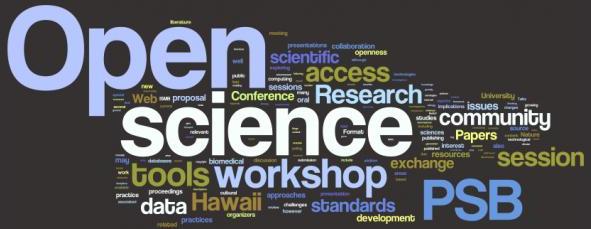¿Cómo deberíamos traducir The Girl with the Dragon Tattoo?
- La joven con tatuaje de dragón
- La chica del dragón tatuado
- Señorita con un dragón tatuado
 No, no, no. No hay que dar muchas vueltas si lo que queremos es poner nombre a la novela sueca de Stieg Larsson de título original Män som hatar kvinnor. La versión española es “Los hombres que no amaban a las mujeres” y estoy plenamente de acuerdo con la crítica cuando la describe como:
No, no, no. No hay que dar muchas vueltas si lo que queremos es poner nombre a la novela sueca de Stieg Larsson de título original Män som hatar kvinnor. La versión española es “Los hombres que no amaban a las mujeres” y estoy plenamente de acuerdo con la crítica cuando la describe como:
Novela absolutamente prodigiosa. Podría calificarse de “novela negra” ó “novela criminal”, pero ninguna de las dos etiquetas le haría justicia. Porque es un retrato social inconmensurable: un retrato de personas, de familias, de ricos y pobres, de empresarios y asalariados; un retrato que habla de economía, corrupción y crimen; un retrato de la Suecia actual y de la del pasado; una Suecia que no cuadra con los tópicos de manual que la identifican con la sociedad progresista del “estado de bienestar”. Porque la Suecia que aquí aparece es la intransigente que esconde su pasado nazi, la que desprecia a las mujeres y las apalea, la de los comportamientos corruptos ó complacientes con la corrupción. Este poderoso retrato social se completa con otras dos patas: una trama que quita el aliento y que te hace devorar la novela, y el retrato de dos personajes que van a quedar en la memoria de los aficionados a la lectura (Pompas de papel 01.06.2008).
Lástima que ya la acabara. Ahora a esperar a que se publiquen los dos siguientes volúmenes de la trilogía Millennium: “La chica que soñaba con una cerilla y un bidón de gasolina” y “La reina en el palacio de las corrientes de aire”. Y menos mal que la acabé, porque he sido incapaz de hacer otra cosa que devorar la novelita en los escasos días en los que me he enfrascado en su lectura.
¡Quién fuera capaz de escribir con tanto talento! Aunque el pobre autor no llegó a disfrutar de las mieles del éxito y ha pasado a engrosar la siniestra categoría de “Muertes por ataque al corazón” de Wikipedia.
 Larsson creció en un medio rural, en la pequeña comunidad de Norsjö, unos 100 km al norte de Umeå. Vivió con sus abuelos hasta la muerte de su abuelo en 1962. Entre 1977 y 1999 trabajó como diseñador gráfico para la agencia de noticias Tidningarnas Telegrambyrå (TT).
Larsson creció en un medio rural, en la pequeña comunidad de Norsjö, unos 100 km al norte de Umeå. Vivió con sus abuelos hasta la muerte de su abuelo en 1962. Entre 1977 y 1999 trabajó como diseñador gráfico para la agencia de noticias Tidningarnas Telegrambyrå (TT).
Militó en la Kommunistiska Arbetareförbundet (Liga Comunista de Trabajadores). Profundamente comprometido en la lucha contra el racismo y la ultraderecha antidemocrática, participó a mediados de los 80 en la fundación del proyecto antiviolencia Stop the Racism, y en 1995 de la Fundación Expo, de cuya revista, Expo, fue director desde 1999. Escribió varios libros de investigación periodística acerca de los grupos nazis de su país y de las oscuras conexiones entre la extrema derecha y el poder político y financiero.
Gran lector y entusiasta del género negro y de la ciencia ficción, escribía sus novelas por las noches, prácticamente en secreto. Cuando finalizó el segundo volumen (La chica que soñaba con una cerilla y un bidón de gasolina) de la serie y con el diseño de la trama del tercero cerrado, pasó su manuscrito a un amigo editor, y así empezó todo.
Inesperada y trágicamente, Stieg Larsson falleció en 2004 de un ataque al corazón a los 50 años, días después de entregar a su editor el tercer volumen (Los hombres que no amaban a las mujeres)y poco antes de ver publicado el primero (La reina en el palacio de las corrientes de aire) .
No pudo ver la obra que le llevó a la fama publicada, y su trágica muerte truncó el plan de unas siete novelas de la serie, que algunos de sus allegados aseguran que tenía en mente. Recientemente, una página web francesa muy influyente (www.evene.fr) calificó a Larsson de «figura legendaria, cuyo extraordinario genio literario ha creado una de las obras literarias más importantes del siglo XXI… Las tres novelas constituyen un auténtico fresco de la sociedad moderna que no puede compararse a lo que ningún escritor de novela criminal ha hecho nunca antes.»
La biografía de Wikipedia concluye comparando a Larsson con el protagonista de su propia novela, Mikael Blomkvist, conclusión (¿fuente primaria?) con la que estoy totalmente de acuerdo, aunque esto sea mucho suponer.
Enlaces:





 No, no, no. No hay que dar muchas vueltas si lo que queremos es poner nombre a la novela sueca de Stieg Larsson de título original
No, no, no. No hay que dar muchas vueltas si lo que queremos es poner nombre a la novela sueca de Stieg Larsson de título original  Larsson creció en un medio rural, en la pequeña comunidad de Norsjö, unos 100
Larsson creció en un medio rural, en la pequeña comunidad de Norsjö, unos 100 